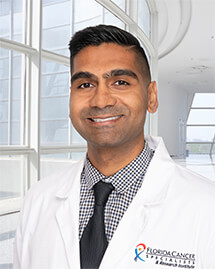Author(s): Jens Hoeppner, M.D., Thomas Brunner, M.D., Claudia Schmoor, Ph.D., Peter Bronsert, M.D., Birte Kulemann, M.D., Rainer Claus, M.D., Stefan Utzolino, M.D., Jakob Robert Izbicki, M.D., Ines Gockel, M.D., Berthold Gerdes, M.D., Michael Ghadimi, M.D., Benedikt Reichert, M.D., Johan F. Lock, M.D., Christiane Bruns, M.D., Ernst Reitsamer, M.D., Maximillian Schmeding, M.D., Frank Benedix, M.D., Tobias Keck, M.D., Gunnar Folprecht, M.D., Peter Thuss-Patience, M.D., Ulf Peter Neumann, M.D., Andreas Pascher, M.D., Detlef Imhof, M.D., Severin Daum, M.D., Tanja Strieder, M.D., Christian Krautz, M.D., Simone Zimmermann, Jens Werner, M.D., Rolf Mahlberg, M.D., Gerald Illerhaus, M.D., Peter Grimminger, M.D., and Florian Lordick, M.D.
BACKGROUND
The best multimodal approach for resectable locally advanced esophageal adenocarcinoma is unclear. An important question is whether perioperative chemotherapy is preferable to preoperative chemoradiotherapy.
METHODS
In this phase 3, multicenter, randomized trial, we assigned in a 1:1 ratio patients with resectable esophageal adenocarcinoma to receive perioperative chemotherapy with FLOT (fluorouracil, leucovorin, oxaliplatin, and docetaxel) plus surgery or preoperative chemoradiotherapy (radiotherapy at a dose of 41.4 Gy and carboplatin and paclitaxel) plus surgery. Eligibility criteria included a primary tumor with a clinical stage of cT1 cN+, cT2–4a cN+, or cT2–4a cN0 disease, in which T indicates the size and extent of the tumor (higher numbers indicate a more advanced tumor), and N indicates the presence (N+) or absence (N0) of cancer spread to the lymph nodes, without evidence of metastatic spread. The primary end point was overall survival.
RESULTS
From February 2016 through April 2020, we assigned 221 patients to the FLOT group and 217 patients to the preoperative-chemoradiotherapy group. With a median follow-up of 55 months, overall survival at 3 years was 57.4% (95% confidence interval [CI], 50.1 to 64.0) in the FLOT group and 50.7% (95% CI, 43.5 to 57.5) in the preoperative-chemoradiotherapy group (hazard ratio for death, 0.70; 95% CI, 0.53 to 0.92; P=0.01). Progression-free survival at 3 years was 51.6% (95% CI, 44.3 to 58.4) in the FLOT group and 35.0% (95% CI, 28.4 to 41.7) in the preoperative-chemoradiotherapy group (hazard ratio for disease progression or death, 0.66; 95% CI, 0.51 to 0.85). Among the patients who started the assigned treatment, grade 3 or higher adverse events were observed in 120 of 207 patients (58.0%) in the FLOT group and in 98 of 196 patients (50.0%) in the preoperative-chemoradiotherapy group. Serious adverse events were observed in 98 of 207 patients (47.3%) in the FLOT group and in 82 of 196 patients (41.8%) in the preoperative-chemoradiotherapy group. Mortality at 90 days after surgery was 3.1% in the FLOT group and 5.6% in the preoperative-chemoradiotherapy group.
CONCLUSIONS
Perioperative chemotherapy with FLOT led to improved survival among patients with resectable esophageal adenocarcinoma as compared with preoperative chemoradiotherapy. (Funded by the German Research Foundation; ESOPEC ClinicalTrials.gov number, NCT02509286.)
Author Affiliations
From Bielefeld University, Medical School and University Medical Center Ostwestfalen-Lippe, Campus Hospital Lippe, Detmold, Germany (J.H.); the Department of Radiation Oncology, Medical University of Graz, Graz, Austria (T.B.); the Clinical Trials Unit, Faculty of Medicine and Medical Center, University of Freiburg, Freiburg, Germany (C.S.); the Institute of Surgical Pathology, University Medical Center Freiburg, Germany (P.B.); the Department of Surgery, University Medical Center Schleswig-Holstein–Campus Lübeck, Lübeck, Germany (B.K., T.K.); Comprehensive Cancer Center Augsburg, Faculty of Medicine, University of Augsburg, Augsburg, Germany (R.C.); the Department of General and Visceral Surgery, University Medical Center Freiburg, Freiburg, Germany (S.U.); the Department of General, Visceral, and Thoracic Surgery, University Medical Center Hamburg–Eppendorf, Hamburg, Germany (J.R.I.); the Department of Gastrointestinal Surgery, IRCCS San Raffaele Scientific Institute and San Raffaele Vita-Salute University, Milan (I.G.); the Department of General, Visceral, Thoracic, and Endocrine Surgery, Johannes Wesling University Hospital Minden, Ruhr University Bochum, Minden, Germany (B.G.); the Department of General, Visceral, and Pediatric Surgery, University Medical Center Göttingen, Göttingen, Germany (M.G.); the Department of General, Visceral, Thoracic, Transplantation, and Pediatric Surgery, University Medical Center Schleswig-Holstein–Campus Kiel, Kiel, Germany (B.R.); the Department of General, Visceral, Transplantation, Vascular, and Pediatric Surgery, University Hospital, University of Würzburg, Würzburg, Germany (J.F.L.); the Department of General, Visceral, Cancer, and Transplantation Surgery, University Hospital of Cologne, Cologne, Germany (C.B.); the Department of Hematology and Oncology, Sana Klinikum Offenbach, Offenbach am Main, Germany (E.R.); the Department of Surgery, Klinikum Dortmund, Klinikum der Universität Witten–Herdecke, Dortmund, Germany (M.S.); the Department of Surgery, University Hospital Magdeburg, Magdeburg, Germany (F.B.); the Department of Medicine I, University Hospital Carl Gustav Carus, Technical University Dresden, Dresden, Germany (G.F.); the Department of Hematology, Oncology, and Cancer Immunology, Charité–University Medicine Berlin, Campus Virchow-Klinikum, Berlin (P.T.-P.); the Department of General, Visceral, Cancer, and Transplantation Surgery, University Hospital Essen, Essen, Germany (U.P.N.); the Department of General, Visceral, and Transplantation Surgery, University Hospital Muenster, Muenster, Germany (A.P.); the Department of Radiotherapy and Oncology, Goethe University Frankfurt, University Hospital, Frankfurt, Germany (D.I.); the Division of Gastroenterology, Rheumatology, and Infectology, Department of Medicine, Charité–Universitätsmedizin Berlin, Berlin (S.D.); the Department of Surgery, Robert Bosch Hospital, Stuttgart, Germany (T.S.); the Department of Surgery, University Medical Center Erlangen, Friedrich Alexander University Erlangen-Nürnberg, Erlangen, Germany (C.K.); the Department of Medicine II, Saarland University Medical Center, Saarland University, Homburg, Germany (S.Z.); the Department of General, Visceral, and Transplant Surgery, Ludwig Maximilian University Hospital, Munich, Germany (J.W.); the Department of Internal Medicine I, Klinikum Mutterhaus der Borromaerinnen, Trier, Germany (R.M.); the Departments of Hematology, Oncology, and Palliative Care, Klinikum Stuttgart, Stuttgart, Germany (G.I.); the Department of General, Visceral, and Transplant Surgery, University Medical Center Mainz, Mainz, Germany (P.G.); and the Department of Medicine II, University Cancer Center Leipzig, Cancer Center Central Germany, University Medical Center Leipzig, Leipzig, Germany (F.L.).
